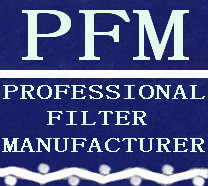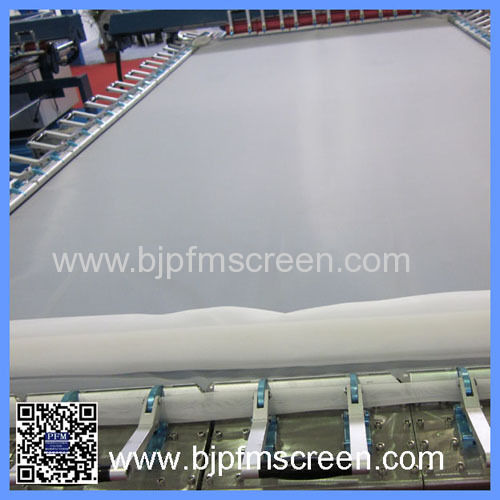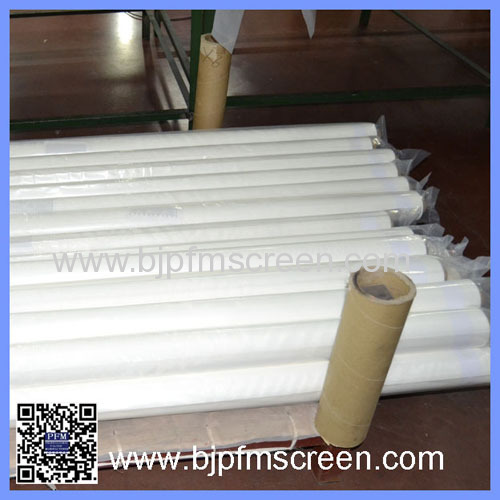


|
BEIJING PFM SCREEN TRADING CO.LTD
|
| Price: | 0.76 USD |
| Payment Terms: | T/T,L/C,WU;Paypal |
| Place of Origin: | Hebei, China (Mainland) |
|
|
|
| Add to My Favorites | |
| HiSupplier Escrow |
Polyester Screen Printing Mesh
| Mono polyester Screen Printing Mesh feature | 1.Good tension 2.Improved strength of wire mesh 3.High stability, stretching process does not affect the screen tension 4.To speed up the printing 5.Chemical resistance, resistance to moisture 6.Uniformity is better, more durable, price is relatively cheap |
| Application of Mono polyester Screen Printing Mesh | Polyester Bolting Cloth Screen Printing Mesh is widely used in electronic printing, circuit board printing, glass printing, CD/DVD printing, ceramic printing, graphic printing, packaging printing, fabric printing, etc. |
Application
Widely used in printing electronic PCB circuit boards; Printing plate making, textile printing, glass, ceramic, print ads, banners, magazines, printed electronic display screen, used to make glass screen mesh, filter, ink used in aviation, aerospace, petrochemical and other high-tech fields of melt filter, etc.
Breif introduct
Polyester screen printing mesh was introduced to the screen printing market over 40 years ago and quickly replaced traditional silk as the fabric of choice among screen printers all over the world. It is a material that is uniquely suitable for screen printing because of its tensile strength, elastic memory and resistance to chemicals, abrasion heat and moisture.
There are 3 types of polyester fabrics used in screen printing and they are monofilament, low-elongation monofilament and multifilament. Most of today's screen printers use monofilament polyester, but the traditional type is rapidly being replaced with "Low-Elongation" fabric, which brings many new benefits to the screen printing process. Here we mainly introduce low-elongation monofilament polyester fabric as this is what we are producing now
Monofilament Polyester is woven from yarn that is extruded from heated polyester into a single strand. The extruded thread is the spun to a precise diameter. Conventional monofilament polyester screen fabric will elongate under tension: the higher the tension level, the more the thread can stretch. At excessive tension levels, the thread reaches its "plastic deformation" point, and the screen will no longer hold tension.
Monofilament polyester is still suitable for non-critical printing applications. In recent years, however, it has been eclipsed by a new development in thread technology: Low-Elongation Polyester.
Low-Elongation Polyester is what we are producing now in a wide range of mesh counts, and our products offers significant advantages over the traditional monofilament polyester:
1.Faster tensioning without damage to the threads
2.Improved fabric strength
3.Faster tension stabilization
4.Higher tension threshold and breaking point
5.Less tension loss during the stretching process
6.Faster turnaround time from the screen room to the pressroom
7.Improved registration due to stable tension
8.Faster Print speeds
Mono polyester Screen Printing Mesh | |||||||
Model | Mesh/cm | ?Mesh/inch | Aperture | Thread
Dia. | Open Area | Thickness | Theoretical
Ink |
10-250 | 10 | 25 | 743 | 250 | 55 | 495 | 274 |
12-140 | 12 | 30 | 686 | 140 | 68 | 277 | 189 |
13-150 | 13 | 33 | 619 | 150 | 64 | 300 | 128 |
16-140 | 16 | 40 | 461 | 140 | 58 | 238 | 139 |
21-80 | 21 | 55 | 296 | 80 | 69 | 120 | 79 |
21-150 | 21 | 55 | 326 | 150 | 46 | 260 | 118 |
22-80 | 22 | 56 | 356 | 80 | 66 | 136 | 90 |
24-80 | 24 | 60 | 320 | 80 | 63 | 136 | 86 |
24-100 | 24 | 60 | 316 | 100 | 57 | 170 | 65 |
28-140 | 28 | 70 | 217 | 140 | 40 | 195 | 76 |
32-55 | 32 | 80 | 257 | 55 | 67 | 103 | 67 |
32-64 | 32 | 80 | 248 | 64 | 63 | 95 | 56 |
32-100 | 32 | 80 | 212 | 100 | 46 | 170 | 73 |
36-90 | 36 | 92 | 183 | 90 | 44 | 150 | 65 |
39-55 | 39 | 100 | 177 | 55 | 56 | 88 | 55 |
43-80 | 43 | 110 | 149 | 80 | 41 | 130 | 53 |
47-55 | 47 | 120 | 152 | 55 | 51 | 88 | 48 |
48-70 | 48 | 122 | 133 | 70 | 41 | 115 | 47 |
53-55 | 53 | 135 | 133 | 55 | 50 | 86 | 42 |
54-64 | 54 | 137 | 115 | 64 | 39 | 100 | 39 |
54-70 | 54 | 137 | 109 | 70 | 35 | 116 | 40 |
61-64 | 61 | 155 | 90 | 64 | 31 | 101 | 30 |
64-55 | 64 | 160 | 98 | 55 | 38 | 98 | 36 |
64-64 | 64 | 160 | 85 | 64 | 30 | 115 | 34 |
68-55 | 68 | 175 | 85 | 55 | 34 | 85 | 28 |
68-64 | 68 | 175 | 78 | 64 | 28 | 105 | 30 |
72-48 | 72 | 182 | 90 | 48 | 36 | 78 | 33 |
72-55 | 72 | 182 | 85 | 55 | 30 | 90 | 27 |
80-48 | 80 | 200 | 72 | 48 | 33 | 74 | 25 |
90-48 | 90 | 230 | 56 | 48 | 25 | 78 | 19 |
100-40 | 100 | 255 | 58 | 40 | 33 | 63 | 21 |
110-40 | 110 | 280 | 48 | 40 | 27 | 64 | 17 |
120-31 | 120 | 305 | 49 | 31 | 35 | 49 | 17 |
120-34 | 120 | 305 | 45 | 34 | 30 | 55 | 16 |
130-34 | 130 | 330 | 40 | 34 | 27 | 55 | 15 |
140-31 | 140 | 355 | 36 | 31 | 26 | 48 | 12 |
140-34 | 140 | 355 | 31 | 34 | 20 | 53 | 10 |
150-31 | 150 | 380 | 32 | 31 | 23 | 49 | 11 |
150-34 | 150 | 380 | 23 | 34 | 13 | 55 | 6.5 |
165-31 | 165 | 420 | 23 | 31 | 15 | 48 | 7 |
Note:The above theoretic data is for reference only,and thickness tollerance | |||||||



